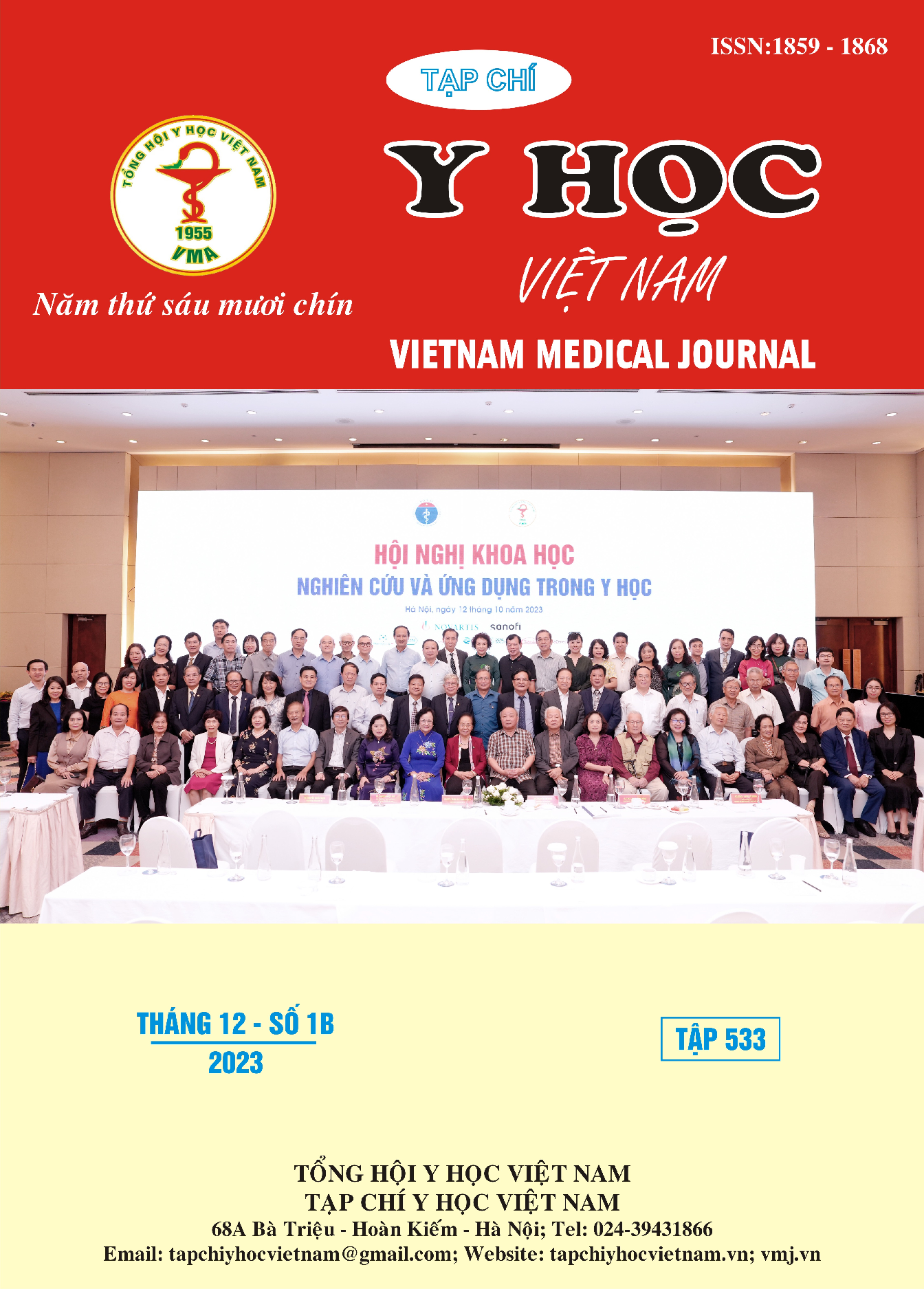CHARACTERISTICS OF HEART INJURY IN ANALYSIS PATIENTS
Main Article Content
Abstract
Research objective: Describe characteristics of cardiac injury in anaphylactic patients. Research subjects and methods: 99 patients diagnosed with anaphylaxis of grade II or higher according to the standards specified in Circular No. 51/2017/TT-BYT on guidelines for prevention, diagnosis and treatment of anaphylaxis from January January 2021 to October 2022 at the Intensive Care Center - Bach Mai Hospital, including 38 patients with heart injury (diagnosed when having 1 of 3 characteristics: Arrhythmia, heart failure heart according to the standards of the European Society of Cardiology ESC 20191, elevated cardiac troponin with at least one value above the reference limit on the 99th percentile (according to the European Society of Cardiology ESC 20191), collected indicators Heart rate, blood pressure, electrocardiogram, echocardiography, Troponin concentration MS: on the day of admission. Calculate the percentage of qualitative variables, quantitative variables expressed by mean values, degree standard deviation, median, minimum value, maximum value, compare mean values by t-test, compare percentages by χ2 (Fisher exact test). Research results: 99 patients had anaphylaxis of grade II or higher, including 38 (38.38%) patients with heart injury. In the heart injury group, there were diverse manifestations of cardiovascular symptoms: circulatory arrest (26.3%), cardiogenic shock (52.6%), dangerous arrhythmias (23.7%), acute pulmonary edema (28.3%), accompanied by rapid pulse, low mean blood pressure, Troponin Ths concentration 1344 ± 171.1, NTproBNP 663 ± 524, reduced left ventricular total blood fraction (EF) found in 93.7% of patients with lesions. Heart injury and reduced wall motion were found in 84.2%. Conclusion: Heart injury in anaphylactic patients develops unpredictably, it is necessary to pay attention to monitoring, checking, and evaluating injury in all patients with anaphylaxis from level II or higher.
Article Details
References
2. Bộ Y tế. "Thông tư: Hướng dẫn phòng, chẩn đoán và xử trí phản vệ". 2017.
3. Demir S, Atici A, Coskun R, Olgac M, Unal D, Sarikaya R, Gelincik A, Colakoglu B, Oflaz H, Sonsoz MR, Buyukozturk S. Evaluation of the left venticular systolic function with the measurement of global longitudinal strain by Speckle tracking echocardiography in anaphylaxis. Asia Pac Allergy. 2018;8:e40.
4. Cha YS, Kim H, Bang MH, Kim OH, Kim HI, Cha K, Lee KH, Hwang SO. Evaluation of myocardial injury through serum troponin I and echocardiography in anaphylaxis. Am J Emerg Med. 2016;34:140–144. [PubMed] [Google Scholar].
5. Nguyễn Anh Tuấn. "Đánh giá hiệu quả điều trị phản vệ theo phác đồ của khoa Hồi sức tích cực, bệnh viện Bạch Mai". Luận văn tốt nghiệp bác sỹ chuyên khoa 2. 2016.78.
6. Pumphrey RS. Lessons for management of anaphylaxis from a study of fatal reactions. Clinical and experimental allergy : journal of the British Society for Allergy and Clinical Immunology. Aug 2000. 30(8):1144-1150. doi:10.1046/j.1365-2222.2000.00864.x.
7. Brown SG. The pathophysiology of shock in anaphylaxis. Immunol Allergy Clin North Am. May 2007. 27(2):165-175, v. doi:10.1016/ j.iac.2007. 03.003.
8. Kounis NG. Coronary hypersensitivity disorder: the Kounis syndrome. Clinical therapeutics. 2013. 35(5):563-571.


